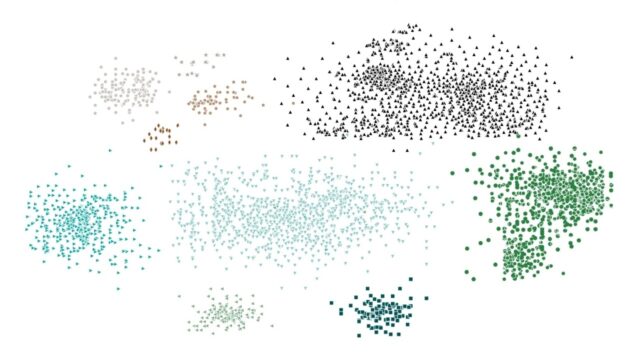
Exploring the science of complexity series (part 25): Conclusions – What is the value of complexity science for those engaged in humanitarian and development work? Specifically, does complexity science tell us anything new?
This article is part 25 of a series of articles featuring the ODI Working Paper Exploring the science of complexity: Ideas and implications for development and humanitarian efforts.
Despite the work-in-progress nature of complexity science, the applications we have examined give us confidence that the concepts of complexity can be used to highlight new possibilities for understanding development and humanitarian problems. In the authors’ own work in developing strategies for organisational learning and building international networks, we have found the concepts of complexity can be used to provide a very useful basis for understanding why a particular change initiative was unsuccessful, as well as to construct a pragmatic basis for conceptualising and planning change initiatives. On the basis of our exploration of complexity, and our experience of working on different kinds of change initiatives, we would argue that the concepts of complexity theory provide a series of important stepping stones towards a more realistic understanding of the limitations of aid. For the aid system and the agencies that occupy it, some of these stepping stones may be too slippery to stand on; others may already be well trodden.
Looking at the bigger picture, we recognise the current potential for complexity science to contribute to a new paradigm for development and humanitarian work, but – as discussed later – the nature of change in the aid sector may make it unlikely that this paradigm will become a fully realised practical reality in the near future.
The concepts of complexity science provide a basis for understanding different aspects of ‘messy realities’ – aspects which may not otherwise be well understood or systematically investigated. These aspects include the kinds of systems that manifest messy realities, the nature of change, and the behaviour of actors. Some of the concepts tap into familiar ways of thinking, while others develop ideas and insights that are more novel.
The notion of the newness of complexity as a science appears to stand in contrast with the perspective of those who suggest that complexity tells us nothing new. We would take exception to these latter in the following three ways:
- Certain concepts may appear to be ‘old hat’, but complexity science requires them to be understood in different ways. For example, systems need to be understood in terms of interdependence and interconnectedness, and not merely as a collection of elements. Feedback needs to be understood as unpredictable, nonlinear processes rather than predictable loops which are the result of the combination of a number of cause and effect relationships. Adaptive agents need to be seen as reacting to both internal and external stimuli, including each other and the wider system.
- Certain concepts may help to make generalisations about certain kinds of phenomena, broadening the contexts within which such phenomena can be identified. Adam Smith’s invisible hand is perhaps the most famous example of emergence; self-organisation shows that actors at all levels of a given system need to be empowered to find solutions to problems, challenging the existing dichotomies of ‘top-down’ versus ‘bottom-up’.
- Some concepts are unique to complexity science, and may have already been partially, and often inappropriately, applied in social, political and economic thinking. For example, sensitive dependence on initial conditions, which is manifest in the idea of path dependence, has been bolted onto the existing neoclassical idea of market equilibrium.
Next part (part 26): Conclusions – What kinds of practical uses are there for complexity science in international aid?
Article source: Ramalingam, B., Jones, H., Reba, T., & Young, J. (2008). Exploring the science of complexity: Ideas and implications for development and humanitarian efforts (Vol. 285). London: ODI. (https://www.odi.org/publications/583-exploring-science-complexity-ideas-and-implications-development-and-humanitarian-efforts). Republished under CC BY-NC-ND 4.0 in accordance with the Terms and conditions of the ODI website.
Header image source: qimono on Pixabay, Public Domain.






